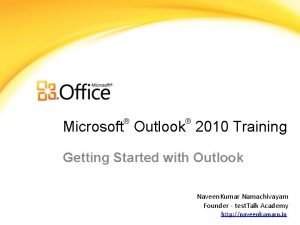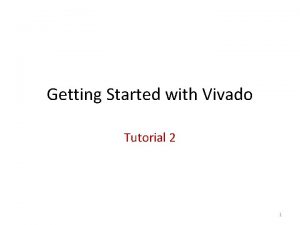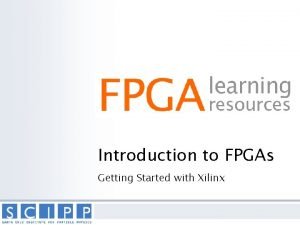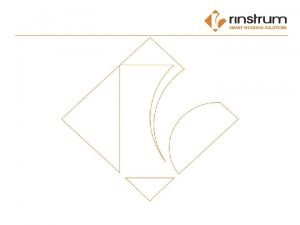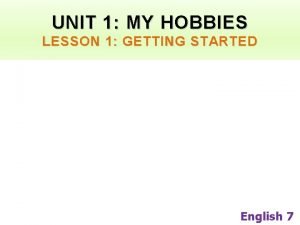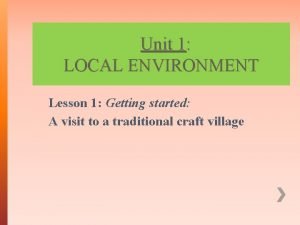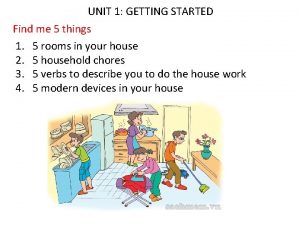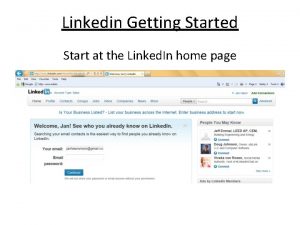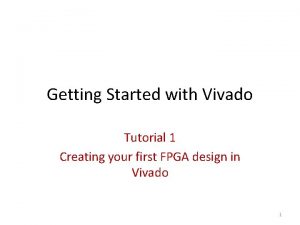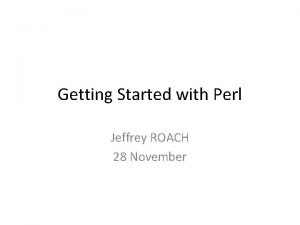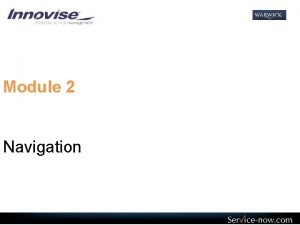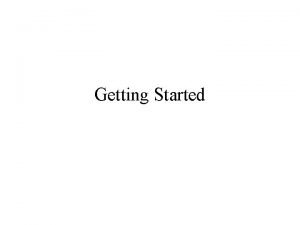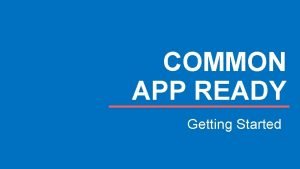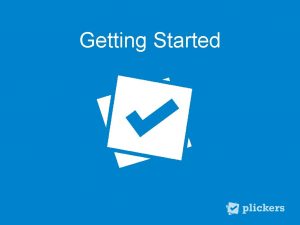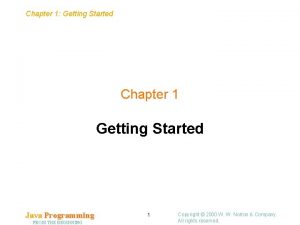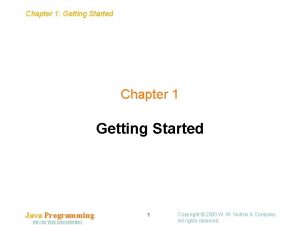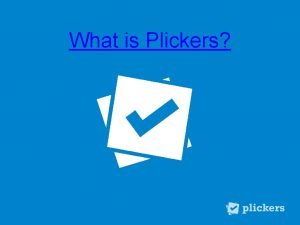GETTING STARTED OUTLOOK 2010 Navigation Pane List Pane















- Slides: 15

GETTING STARTED OUTLOOK 2010

Navigation Pane List Pane Reading Pane To-Do Bar

Overview � � � � Quick Access Toolbar Title Bar Help button Tabs * File Tab (backstage view) * Others… Group Names * Function/Commands Navigation Pane * Mail * Calendar * Contacts * Tasks Zoom level slider

Using the Navigation Pane Favorites Display email folders Displaying lists of contacts, tasks, notes, etc. Expanded list or buttons

Personalizing the Reading Pane View Tab | Layout Group | Reading Pane to the right of the Contents Pane: Reading Pane to the bottom of the Contents Pane:

Using the Ribbon for Common Tasks Related actions grouped by contextual tabs across the top. Command group names

Using the Ribbon for Common Tasks Help is available relative to the area of focus in Outlook. Accessing Help • • • From the menu bar From the Office Help button Using the F 1 hot key Type your question or keywords in the Search field provided.

The Ribbon is the band of options across the top of a window in Office 2010 applications. � The Ribbon appears when you create or modify e-mail messages, calendar items, contacts, tasks, or journal entries. �

The Ribbon Tabs: each tab is related to specific kinds of work you do in Outlook; Message tab is shown here. 2. Groups: each tab has several groups that show related items together; Basic Text shown here is a group. 3. Commands: A command is a button, a box to enter information, or a menu. The Bold button and the Font list are commands. The more commonly used commands, such as Paste, have the largest buttons. 1.

The Ribbon will differ depending on the area of Outlook accessed. 1. 2. 3. A new message shows the Message and Options tabs. A new appointment shows the Appointment tab. A new contact shows the Contact tab.

The Ribbon � A small arrow at the bottom of a group means there are more options available for that section of the Ribbon. � The button is called the Dialog Box Launcher. In the example below, if you click the arrow next to the Basic Text group on the Message tab of a new e-mail message additional options are displayed.

The Mini Toolbar The Mini toolbar allows you quick access to formatting commands. 1. 2. Select your text by dragging with your mouse, and then point at the selection. The Mini toolbar appears in a faded fashion. If you point to it, it becomes solid. You can click a formatting option.

The Quick Access Toolbar is a small toolbar above the Ribbon and next to the Office button. It is relative to the location in Outlook. You can personalize what is displayed on this toolbar with a right-click.

Keyboard Shortcuts The majority of keyboard shortcuts that use the CTRL key, such as CTRL+N for New, CTRL+C for Copy, and CTRL+V for Paste are the same as in previous Office versions. Start by pressing the ALT key. Then press the letter underlined or number indicated in the section desired.

Thank You!
 The secret of getting ahead is getting started
The secret of getting ahead is getting started Microsoft outlook 2010 training
Microsoft outlook 2010 training Getting started with vivado
Getting started with vivado Getting started with unix
Getting started with unix Getting started with splunk
Getting started with splunk Rancher get started
Rancher get started Getting started with excel
Getting started with excel Counter code
Counter code Getting started with lua
Getting started with lua English 7 unit 1 getting started
English 7 unit 1 getting started Unit 1 local environment getting started
Unit 1 local environment getting started Unit 1 getting started
Unit 1 getting started Linkedin getting started
Linkedin getting started Hi3ms
Hi3ms Dr jeffrey roach
Dr jeffrey roach Getting started with ft8
Getting started with ft8

